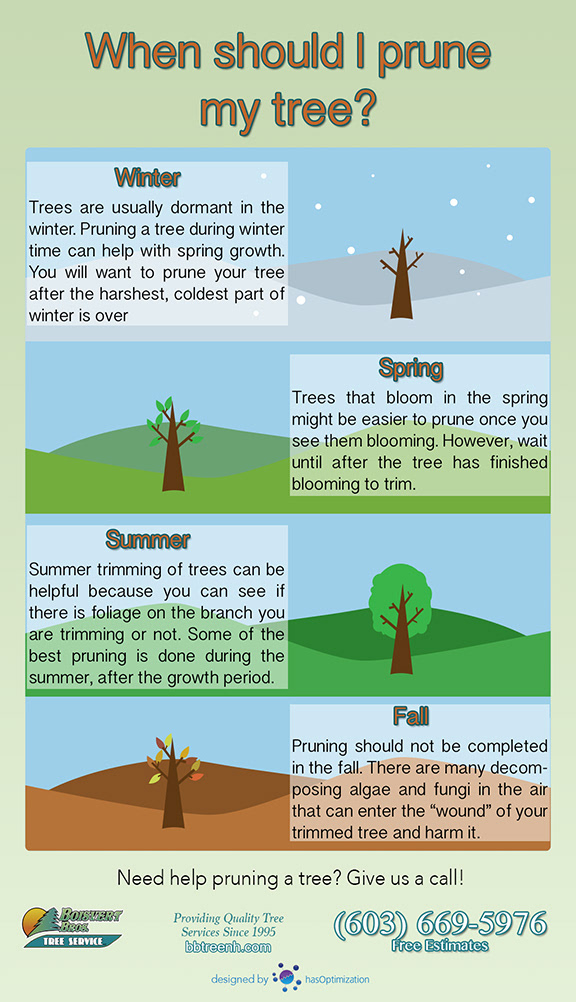Identifying The Demand For Tree Elimination: An Overview For Homeowners
Identifying The Demand For Tree Elimination: An Overview For Homeowners
Blog Article
Written By-Churchill Noer
Trees include charm and value to residential property, but they can likewise present a danger throughout severe climate events. If a tree has quit growing, is showing noticeable fungal development, or has a leaning trunk, it should be eliminated by a specialist to prevent residential or commercial property damage and injury.
To get more information, go to a house owner resource reasonable co-hosted by HPD, the Center for NYC Neighborhoods, and Brooklyn-based housing companions this evening in Bedford-Stuyvesant. The occasion will certainly feature the Homeowner Manual, a new overview to aid home owners navigate the responsibilities of possessing a home.
1. arborist exam or Dying Branches
Trees are an integral part of your home's landscape, offering color and charm. They additionally give sanctuary for wildlife and create oxygen, yet also healthy trees can experience health problems that may necessitate their elimination. Dead or passing away trees aren't simply undesirable, they can be hazardous. Their branches might drop during a tornado, resulting in expensive home damages and injuries.
When a tree's branches begin to pass away, it implies that its structure is starting to break down. If the majority of its branches are dead, it is most likely time to remove it.
Try to find an absence of new development, bark peeling, open wounds or dental caries, fungis growing on the trunk or origins and a basic look of decay in the entire cover. These indicators of infection can show a major issue that will certainly require specialist tree services to deal with.
2. Leaning Trunk
While it's typical for trees to lean every now and then as a result of phototropism, if a tree has a harmful or serious lean that's not as a result of natural processes - maybe a sign that the tree requires to be gotten rid of. If the tree is leaning toward a power line, home, lorry, play framework or any other location that could be hazardous to individuals if it drops, then contacting an expert tree solution for elimination need to be a leading priority.
It's likewise crucial to expect any kind of sudden changes in a tree's leaning as it can show damages to the roots or trunk that might bring about dropping. This is particularly real throughout thundercloud, because high winds and rain-soaked soil can cause a lean to transform promptly. Normal surveillance, specifically throughout and after tornados can assist house owners identify prospective issues with their trees so they can call an arborist for a comprehensive evaluation.
3. Parasite Infestation
Some pest infestations, such as wood-boring pests like emerald ash borer or sap-suckers like range bugs, are so extreme that they can trigger a tree to die. The best method to avoid pest infestation is to check your trees often. Search for places, holes, or discolorations in the fallen leaves and bark. Examine the trunk for fractures and indicators of insect damages, such as tunnels or tracks.
If a tree ends up being also infested with pests, or is close to a home or power lines, an arborist might recommend removal. If a leaning tree develops a new, unpredictable lean, an arborist will likely advise removal also to guarantee the safety of people and property. If a weakened or dead tree constantly drops extreme branches, it is an indicator that it is time to remove the tree. If a tree continues to drop branches for a prolonged amount of time, it could lead to architectural problems and potential building damage.
4. Damaged Trunk
Trees are a gorgeous and fundamental part of our landscape, yet they do need regular like keep them healthy and safe. If a tree is damaged beyond repair it is most likely time for it to find down.
https://www.bobvila.com/slideshow/the-dos-and-don-ts-of-planting-ground-cover-52881 of damages to the trunk, including vertical cracks, joints, dead branch stubs, visible wounds or open cavities and extreme tree-rot. The presence of fungis at the base of the trunk is another alerting sign. Fungi may show that the phloem and xylem (life-support tissues) are endangered, enabling the spread of illness or a future failing.
Additionally, consider whether the tree has actually quit expanding. Healthy trees will have new growth each year, which may be visible as buds or branches sprouting and extending. If you don't see any type of brand-new development, it's a good concept to have an arborist assess the tree and follow their suggestion for elimination. maintanace passing away or damaged tree can drop and trigger home damages.